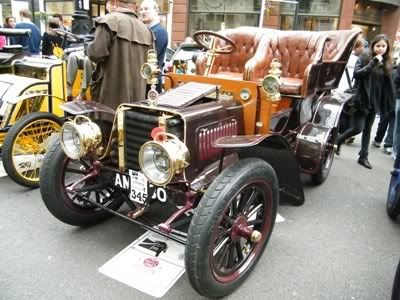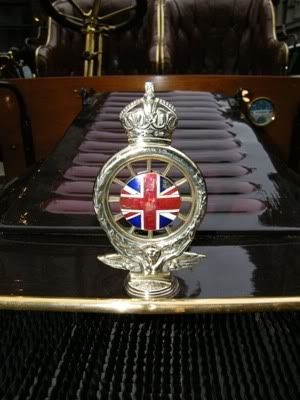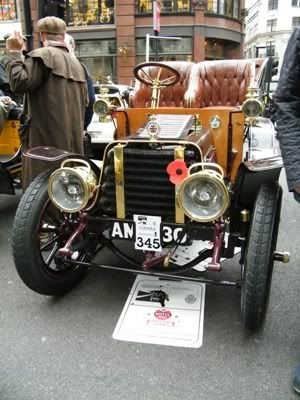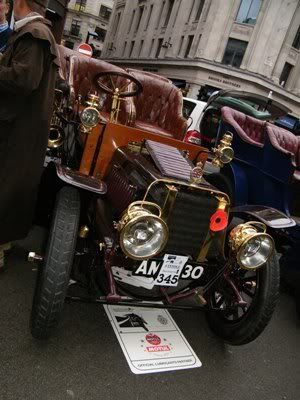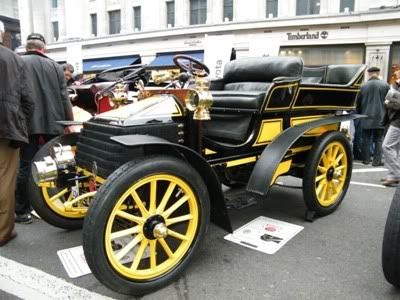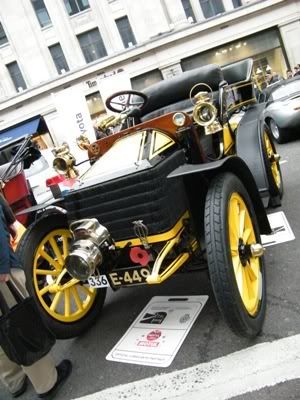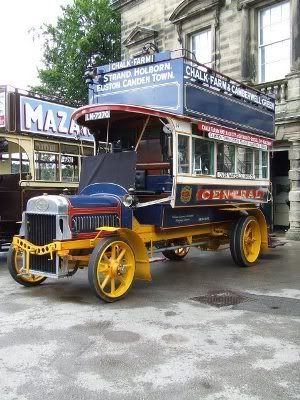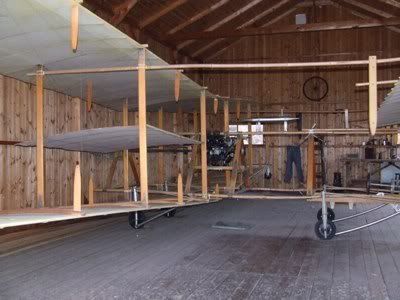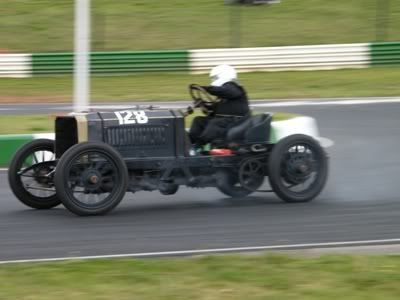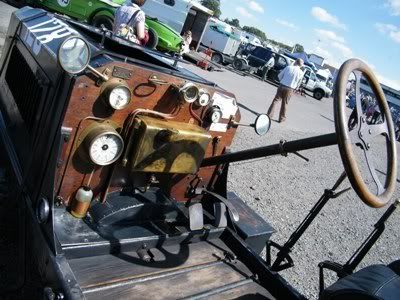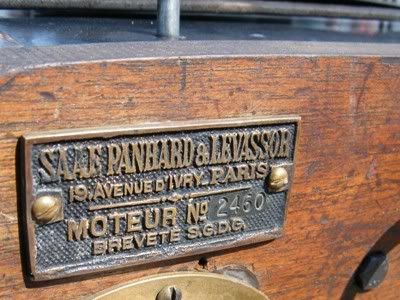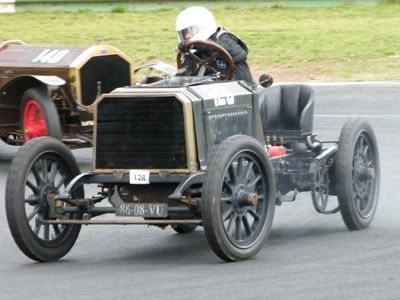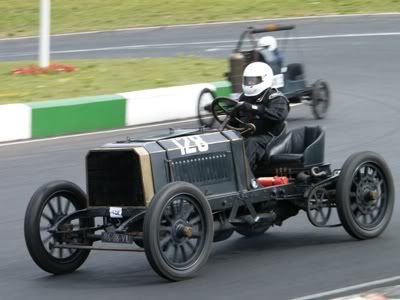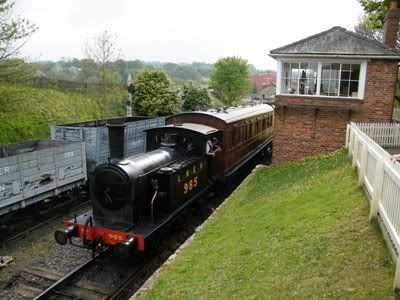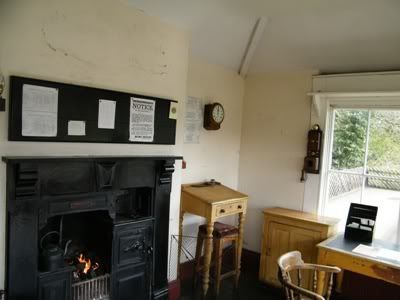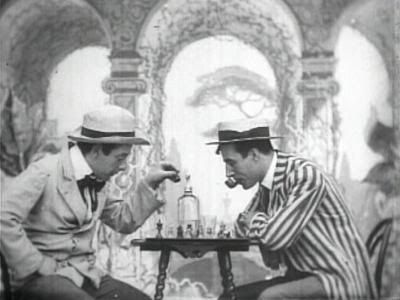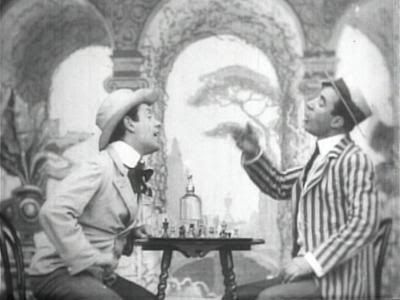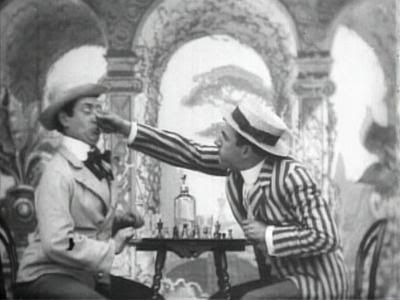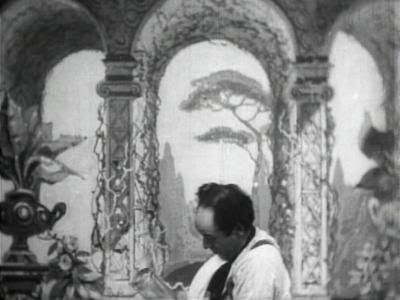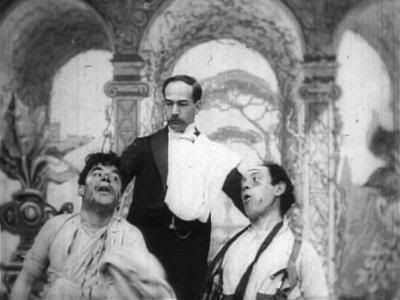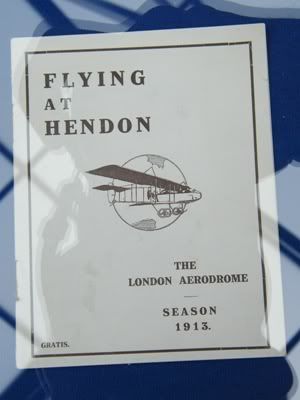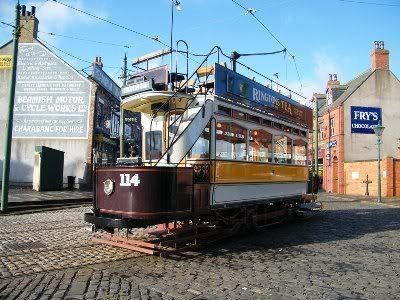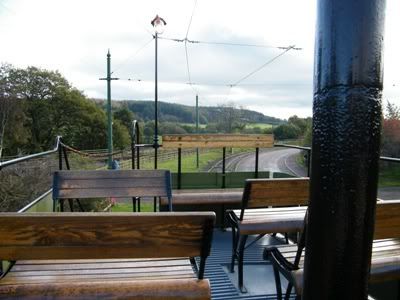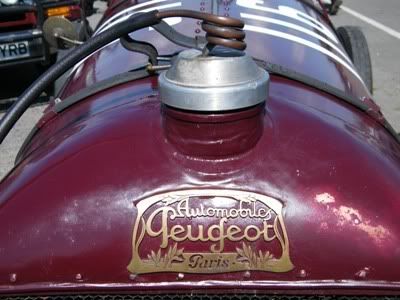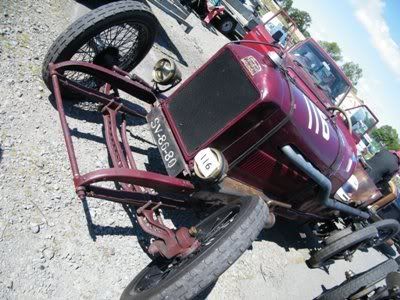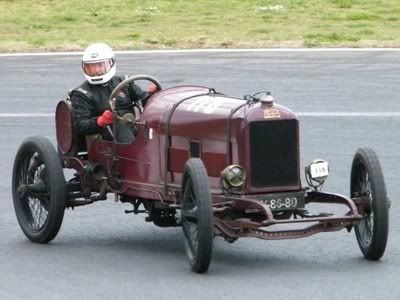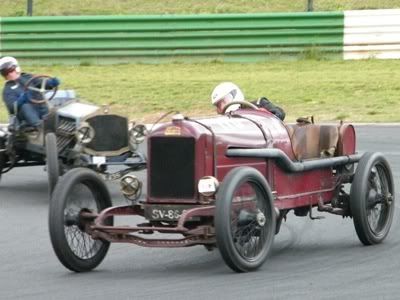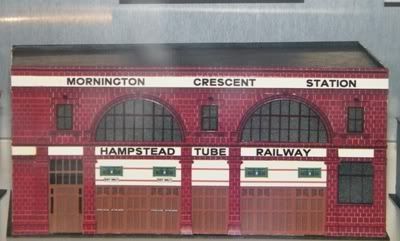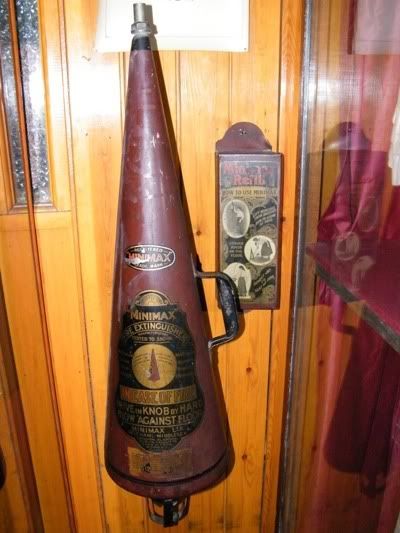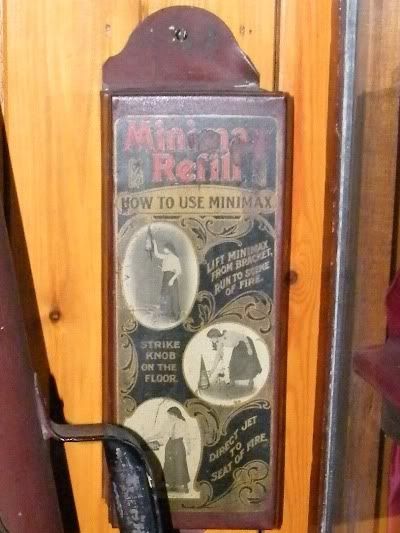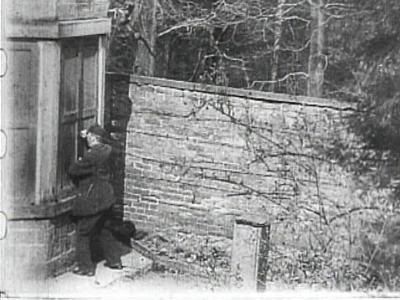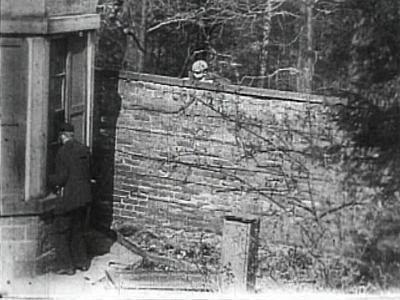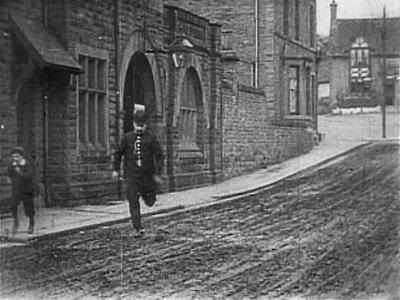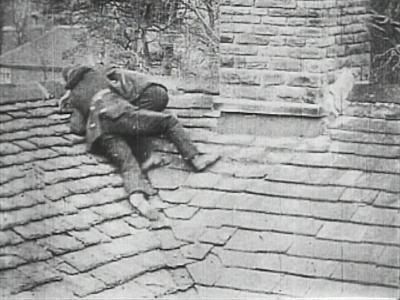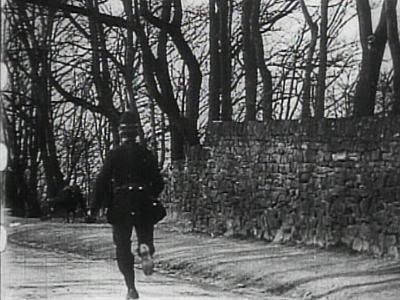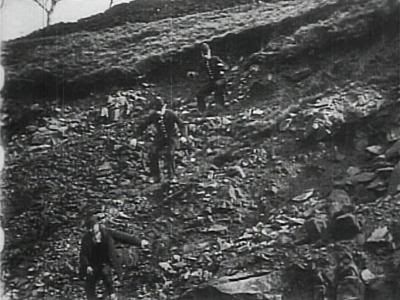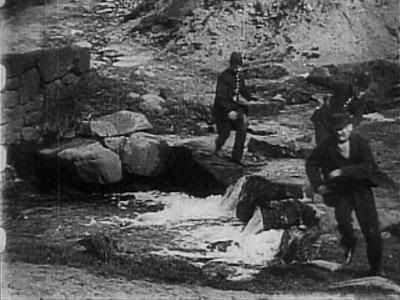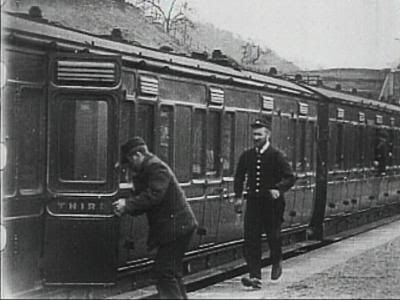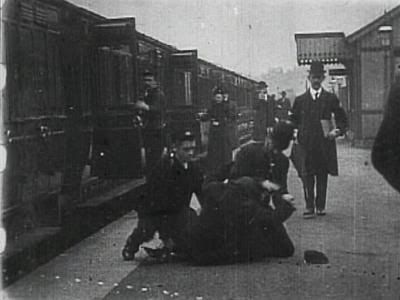A blog about the Edwardian era in the UK - objects, buildings, people, literature, film and all other aspects of the Edwardian era (covering 1901-1919)

Saturday, 31 December 2011
Travel Underground Into The Heart of the Shopping Centres, 1908
London Underground poster dating from 1908 - seeming as the January sales are imminent, the timing of this post is rather apt
Wednesday, 28 December 2011
Sunbeam 12hp Car, 1903
Founded as a bicycle business in Wolverhampton, Staffordshire in 1887 by John Marston, like other bicycle manufacturers he was one of the first motor car producers. This is a good example of an early Sunbeam, a 1903 example fitted with a Tonneau body
Monday, 26 December 2011
Sunday, 25 December 2011
Saturday, 24 December 2011
Wolseley 10hp Car, 1903
This is a Tonneau bodied 10hp, 2 cylinder Wolseley dating from 1903. Wolseley started by making three wheeled vehicles, and started making four wheel cars in 1899. The company was a very successful early British car manufacturer, and were bought by Vickers (the armaments firm) in 1901
Thursday, 22 December 2011
Leyland X2 Motor Bus, 1908
This is the oldest surviving Leyland vehicle in the world - a Leyland X2 Motor Bus, built for the London Central bus company in 1908. Part of the Mike Sutcliffe collection of restored early Leyland busses, this brightly coloured early survivor was seen at the Crich Tramway Museum's Edwardian Weekend in June 2008
Wednesday, 21 December 2011
Roe I Biplane, 1907
The Roe I Biplane was the first powered aircraft to be designed, built and flown in the UK. It was designed by Alliott Verdon Roe to claim a prize offered by the Brooklands Automobile Racing Club and based it on a powered model with which he won a £75 Daily Mail prize at Alexandra Palace in 1907. When first built it was powered with a 9hp JAP engine, but was too underpowered to get airborne, but Roe borrowed a 24hp Antoinette engine with which he was able to get the Roe I airborne, for the first time completing a short hop off the ground on June 8 1908. Unfortunately it was damaged beyong repair after several more hops when Brooklands race track attendants dropped it when lifting it over a fence. This non-flying replica was built in 1988 and is housed in a replica of Roe's shed built for the aircraft
Tuesday, 20 December 2011
Panhard-Levassor S4M, 1903
Established as a car company in 1887, Panhard et Levassor (later Panhard-Levassor), was one of the most successful motor car companies before the outbreak of the First World War. This 1903 built S4M racer sports a 13500cc engine, and in the Edwardian Race at the 2011 VSCC Mallory Park race meeting was the oldest competitor, with the secon largest cubic capacity engine (the largest had an engine from a Zeppelin!)
Monday, 19 December 2011
North Eastern Railway and the Hartlepool Bombardment, 1914
At West Hartlepool Station, shortly after the Liverpool service departed a shell smashed through the station wall at the south end of the 'up' platform. The same shell damaged the brake of the train due out at 0850, and the passenger line to the south was cut in several places. At first the staff ensured their families were safe, but after ascertaining that they were, they returned to their posts.
At Hartlepool Station only four staff plus the stationmaster were working at the time of the bombardment. Mr Walker, a ticket collector, gave first aid to a sailor on the SS Phoebe in dock close to the station, who had been mortally wounded by shrapnel. Mr Llewellyn, a Porter, made stretcher and ambulance materials ready, and Mr Willey, a Porter, gathered women into the waiting rooms away from falling glass, as roof squares were constantly falling, especially at the west end of the station.
In the docks, shunters and engine drivers stayed at their posts until it was foolhardy to stay there. In many places the rails were cut by shells or blocked by debris. Railway operations for the rest of the day were mainly disrupted by both the damage to portions of track and damage to telegraph wires.
Two North Eastern Railway men were killed in the bombardment. George Dring, a mooringman, was wounded in the chest by a piece of shell and died later in the day. With around a dozen others he took shelter behind the dock masters offices . A shell struck one of the crabwinches which controlled the dock gates, smashing it, and wounding six or seven men and killing four, including George Dring. Mr Dring joined the North Eastern Railway in 1894, originally working on a dock dredger used by the Dock Engineers Department. In 1904 Dring was appointed to the position of mooringman (a Dock Pilot, in the Dockmaster's Department). He was known as a quiet and well conducted man, and left a widow and six sons and daughters, two of which were still at school.
William Sarginson, a Shunter at West Hartlepool, was the second NER casualty. He died in Hospital on January 4th 1915 from wounds received in the bombardment. He was on duty at Stag Island in the docks, and was dealing with wagons when he was struck by fragments from a shell. He called to his mate, Mr R Coates, for assistance, which was promptly rendered. When he was being carried away on Mr Coates' back he was again struck, injuring Mr Coates as well. William Sarginson suffered twenty injuries in total to various parts of his body. Sarginson was 22, unmarried and well respected and had been in North Eastern Railway since 1913.
Following the raid, on June 18th 1915, thirty-four members of North Eastern Railway local ambulance classes were given medals by General Manager Sir A Kaye Butterworth for distinguishing themselves under fire during the bombardment. After the June 18th presentation it was discovered that two ticket collectors had also rendered rendered special services but had escaped official recognition. Sir A Kaye Butterworth agreed these men should have medals obtained for them also, and the two men, Mr James P Devlin and Mr James Walker were presented with the medals by General Superintendent Major HA Watson on September 21st 1915.
Sunday, 18 December 2011
North Eastern Railway Signal Box, 1913
Like the North Eastern Railway Goods Shed seen in a previous post, the Signal Box is a bygone relic of the railways when the railway network was much larger than it is now. The signal box would control a section of railway line, including the direction the points would face, as well as the signals indicating danger or if it was safe to proceed. Signal boxes and Signalmen were instrumental in keeping railway travel safe and ensuring the smooth operation of the railways. The modern day railways has very few signalling centres, and as is to be expected, they are mainly computer operated.
Saturday, 17 December 2011
'A Chess Dispute', 1903
Another film by prolific early film maker RW Paul, the immobility of the film camera is used to the advantage of this film.
The film shows two men sat at a table playing chess, which gets more and more heated and an argument starts. One man twists the other's nose, who in turn sprays liquid over him.
A full blown fight then starts, mainly out of shot, with only a few glimpses seen, ie a fist swinging over and over, a bottle being used as a weapon, one man standing up and jumping on his opponent, clothes flying through the air etc.
The fight is brought to a stop as the Waiter pulls them both up into shot again, both battered and bloody, but still arguing with each other.
The film is available on the British Film Institutes' 'Early Cinema - Primitives and Pioneers' DVD
Friday, 16 December 2011
Hartlepool Bombardment, December 16 1914
Over 100 people died as more than 1,000 shells rained down on the town for
about 40 minutes from the three heavy cruisers Blucher, Seydlitz and Moltke
which emerged from the mist shortly after 8am on December 16 1914. Amongst the
casualties was Theo Jones, the first soldier to die on British soil in the Great
War.The previous evening four battle cruisers, 'Seydlitz', 'Moltke', 'Von der
Tann' and 'Derrflinger'; one heavy cruiser, 'Blucher', four light cruisers and
two flottillas of destroyers had left their base, heading out into the North
Sea. The intention was to bombard Hartlepool and Scarborough, both were by now
fortified towns and considered legitimate targets.
At dawn, six miles east of Hartlepool, shots were exchanged between
them and the destroyers of the Local Defence Patrol who left to raise the alarm.
No-one in the town heard anything. The 'Seydiltz', 'Moltke' and 'Blucher'
continued to steam towards the nearest target and the rest headed for
Scarborourgh. At 8.10 a.m. as the inhabitants were readying themselves for the
day's work, the first shell was fired. They were aiming at the shore batteries
and the Lighthouse. The shell cut all the lines of communications between the
batteries throwing them into confusion. By 8.25 a.m. most of the ships had come
as close as four thousand yards and had begun to pour their fire into the gun
emplacements and the docks. Some of the armour piercing shells had delayed
action fuses and a number bounced off the batteries into the town.
Henry Smith Terrace was dangerously close to the action. There were
hundreds of people milling about, taken totally by surprise, the coastguards
were doing their best to evacuate everybody safely. The air was filled with
black smoke, the screams of shells passing overhead and the cries of children
separated from their families. For about three quarters of an hour the
bombardment continued, 1,150 shells were fired into the area killing 112 and
wounding over 200. When it was clear the attack was over people began to filter
back to the shoreline, some helping to dig out the injured from collapsed
buildings, others helping themselves to shell fragments to keep as
souvenirs.Amongst the casualties was Theo Jones, the first soldier to die on
British soil in the Great War.
Thursday, 15 December 2011
Wednesday, 14 December 2011
Newcastle A Class Tram 114, 1901
Entering service again in Summer 2011 after a mid-preservation going over and repaint, Newcastle Tram number 114 is a wonderful example of an early electric tram restored into original condition. 114 was one of 20 trams built in a batch to the A class design by Hurst Nelson in Motherwell, Scotland, with a short canopy over each end and an open top deck. Between 1905 and 1907 they were all modified with full length canopies and covered top decks. They were further rebuilt in the 1930's to keep them in good condition.
By the Second World War, 114 and other Trams in the same class were in storage when Sheffield needed trams to replace ones destroyed or damaged in the blitz. They were delivered to Sheffield in late 1941 and further modified, which included fully enclosing them, making it look very different from when it was built. It was brought out of service in 1950 and was sent to a scrapyard in 1951. Like many other Trams which have survived to be preserved, the lower deck was sold, and in 114's case was used on a farm with five others, for storage or to house animals. After being discovered and identified by Tram enthusiasts, it was rescued by Tyne and Wear Museums, and eventually transferred to Beamish in 1987. It's restoration was completed in 1996, and is the only open top tram with short canopies surviving. In 2010, it was taken out of service for a spruce up to keep it in good condition. The time was taken to repaint it, and a lot of painstaking research was undertaken to discover what would be an accurate livery for 114. The result is fantastic, and there is a very good article by the Beamish Curator of Transport here http://www.beamish.org.uk/downloads/Newcastle114article.pdf
Tuesday, 13 December 2011
Peugeot 148 Grand Prix, 1913
Built for the 1913 French Grand Prix, this Peugeot 148 took part in the Edwardian Race at the Vintage Sports Car Club's Mallory Park race meeting in August 2011
Monday, 12 December 2011
Saturday, 10 December 2011
Minimax Fire Extinguisher
The Grandad of the modern day fire extinguisher, this is the Minimax Carbon Dioxide Fire Extinguisher, a typical domestic fire extinguisher of the late Victorian and Edwardian era
Thursday, 8 December 2011
Wednesday, 7 December 2011
'Daring Daylight Burglary', 1903
The film starts with a burglar climbing over a wall and breaking into a large house. A small boy sees the burglar doing so, and runs to the Police Station, with the Police then running to the house.
After the Police enter the house, the burglar is seen on the roof where he is caught by a Policeman. They fight, and the policeman is subdued and then thrown from the rooftop onto the street below, where he is shown lying unconscious, possibly dead. Another Policeman goes to his rescue and places him into a horse-drawn ambulance.
The chase for the burglar continues, and after being caught again, subdues yet another Policeman, and is chased down a rocky hillside and then across a stream. The burglar arrives at a railway station and jumps into a carriage just as a train is departing.
The chase appears to be over, however at the next station, the Police are waiting for him, presumably having been telegraphed from the previous station, and the burglar is subdued and arrested by a Policeman with the help of a young railway worker. The burglar is then led away in handcuffs.
The film is available to view on the British Film Institutes' 'Early Cinema - Primitives and Pioneers' DVD

